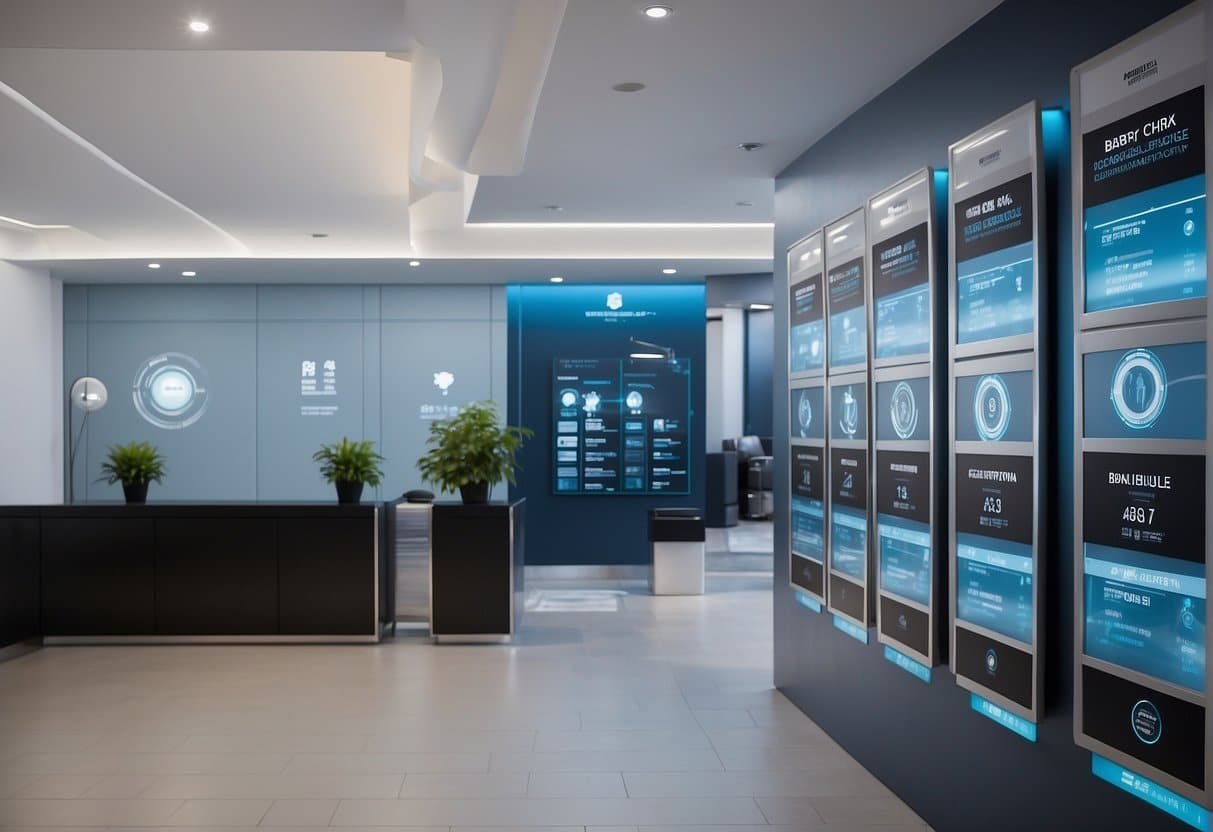Ozone Air Purifiers: What You Need to Know
Ozone air purifiers are a popular choice for individuals looking to improve the air quality in their homes. These air purifiers work by producing ozone, which can help neutralize certain types of airborne contaminants such as dust and particles. However, this same process can also create harmful byproducts that can be detrimental to human health.

Understanding how ozone air purifiers work and their benefits can help individuals make an informed decision when it comes to improving indoor air quality. While ozone air purifiers can be effective in removing certain pollutants from the air, it is important to consider health and environmental considerations before making a purchase. Additionally, comparing air purification technologies and understanding installation and maintenance requirements can also help individuals choose the best air purifier for their needs.
Ozone Air Purifiers Exposed: Understanding the Basics and Beyond
- Ozone air purifiers work by producing ozone to neutralize certain types of airborne contaminants.
- While effective, ozone air purifiers can also create harmful byproducts that can be detrimental to human health.
- Considering health and environmental considerations, comparing air purification technologies, and understanding installation and maintenance requirements can help individuals choose the best air purifier for their needs.
Understanding Ozone Air Purifiers
What Is Ozone?
Ozone is a naturally occurring molecule composed of three oxygen atoms. It is a highly reactive gas that can be harmful to humans when inhaled in large quantities. However, in small amounts, ozone can be useful in neutralizing certain types of airborne contaminants.
How Do Ozone Air Purifiers Work?
Ozone air purifiers work by producing ozone gas, which reacts with pollutants in the air and breaks them down into harmless substances. This is achieved through a chemical reaction between the ozone and the pollutants, which results in the creation of new molecules.
The process of ozone generation involves the use of an ozone generator, which produces energized oxygen molecules that react with pollutant sources in the air. This process creates ozone, which can help to neutralize certain types of airborne contaminants such as dust and particles. However, this same process can also create harmful byproducts that can be detrimental to human health.
Types of Ozone Generators
There are two main types of ozone generators: corona discharge generators and ultraviolet generators. Corona discharge generators are the most common type and work by passing air through an electrical field that ionizes the oxygen molecules in the air, resulting in the creation of ozone.
Ultraviolet generators work by using ultraviolet light to create ozone. This type of generator is less common and is typically used in smaller, portable air purifiers.
It is important to note that while ozone air purifiers can be effective at neutralizing certain types of airborne contaminants, they can also be harmful to human health if not used properly. It is recommended to use ozone air purifiers in well-ventilated areas and to follow the manufacturer’s instructions carefully.
Benefits of Using Ozone Air Purifiers

Ozone air purifiers are known for their ability to clean the air in a room and make it healthier to breathe. They work by releasing ozone gas into the air, which then reacts with airborne contaminants and eliminates them. Here are some of the benefits of using ozone air purifiers:
Elimination of Airborne Contaminants
Ozone air purifiers are effective in eliminating airborne contaminants such as allergens, pollen, dust, and smoke. When ozone comes into contact with these contaminants, it oxidizes them and breaks them down into harmless molecules. This makes the air cleaner and healthier to breathe.
Reduction of Odors and Smoke
Ozone air purifiers are also effective in reducing odors and smoke in the air. When ozone comes into contact with odors and smoke, it oxidizes them and breaks them down into harmless molecules. This helps to eliminate unpleasant smells and make the air fresher.
Control of Bacteria and Viruses
Ozone air purifiers are also effective in controlling bacteria and viruses in the air. When ozone comes into contact with bacteria and viruses, it oxidizes them and breaks them down into harmless molecules. This helps to reduce the spread of infectious diseases and make the air healthier to breathe.
Overall, ozone air purifiers are a great choice for those looking to improve the air quality in their homes or offices. They are effective in eliminating airborne contaminants, reducing odors and smoke, and controlling bacteria and viruses. However, it is important to note that ozone air purifiers should be used in moderation and in accordance with the manufacturer’s instructions to avoid any potential health risks.
Comparing Air Purification Technologies

When it comes to air purification technologies, there are several options available in the market. Each technology has its own strengths and weaknesses, and it is essential to understand them before making a purchase decision. In this section, we will compare the three most popular air purification technologies: HEPA filters, ionizers, and activated carbon.
HEPA Filters Versus Ozone
HEPA filters are the most common type of air purification technology. They work by trapping airborne particles such as dust, pollen, and pet dander in a filter. The filter is made up of a dense mesh of fibers that can trap particles as small as 0.3 microns. HEPA filters are highly effective at removing particulate matter from the air, but they are not effective against gaseous pollutants such as odors, smoke, and volatile organic compounds (VOCs).
Ozone air purifiers, on the other hand, work by producing ozone, which reacts with pollutants in the air and neutralizes them. While ozone air purifiers can be effective at removing certain types of airborne contaminants, they can also create harmful byproducts that can be detrimental to human health. Therefore, ozone air purifiers are not recommended for use in homes and offices.
Ionizers and Ozone
Ionizers work by releasing negatively charged ions into the air, which attach themselves to positively charged particles such as dust and allergens. The particles become too heavy to remain airborne and fall to the ground, where they can be vacuumed or swept away. However, ionizers can also produce ozone as a byproduct, which can be harmful to human health.
Therefore, it is recommended to use ionizers that do not produce ozone. Some ionizers come with a built-in ozone generator that can be turned off, while others use a different type of technology that does not produce ozone.
Activated Carbon and Chemical Adsorption
Activated carbon filters are effective at removing odors and VOCs from the air. The filter is made up of activated carbon, which has a porous structure that can trap and absorb gaseous pollutants. Activated carbon filters are often used in combination with HEPA filters to provide comprehensive air purification.
Chemical adsorption is another air purification technology that uses a material such as zeolite or potassium permanganate to trap and absorb gaseous pollutants. Chemical adsorption is effective at removing odors and VOCs from the air, but it is not effective against particulate matter.
In conclusion, each air purification technology has its own strengths and weaknesses. HEPA filters are highly effective at removing particulate matter from the air, while activated carbon filters are effective at removing odors and VOCs. Ionizers can be effective at removing allergens from the air, but they can also produce harmful byproducts such as ozone. It is essential to understand the strengths and weaknesses of each technology before making a purchase decision.
Health and Environmental Considerations

Ozone air purifiers have gained popularity in recent years for their ability to remove certain pollutants from the air. However, there are potential health and environmental considerations that users should be aware of before purchasing and using these devices.
Potential Health Risks of Ozone Exposure
While ozone can effectively remove certain pollutants from the air, it can also be harmful to human health. According to the Environmental Protection Agency (EPA), exposure to high levels of ozone can cause coughing, chest pain, shortness of breath, and throat irritation. Prolonged exposure to ozone can also lead to chronic respiratory diseases such as asthma.
Environmental Protection Agency (EPA) Guidelines
The EPA has set guidelines for safe ozone exposure levels. The agency recommends that indoor ozone levels should not exceed 0.05 parts per million (ppm). Ozone generators that produce more than this amount are considered harmful and should not be used in occupied spaces.
Safe Use Practices for Ozone Air Purifiers
To minimize potential health risks, users should follow safe use practices when using ozone air purifiers. It is recommended that users only operate these devices in unoccupied spaces and follow the manufacturer’s instructions carefully. Users should also regularly check and maintain their ozone air purifiers to ensure they are working properly and not producing harmful levels of ozone.
In summary, while ozone air purifiers can effectively remove certain pollutants from the air, users should be aware of the potential health and environmental considerations associated with their use. It is important to follow safe use practices and guidelines set by the EPA to minimize potential risks.
Installation and Maintenance
Setting Up Your Ozone Air Purifier
Installing an ozone air purifier is a relatively simple process that can be done by following the manufacturer’s instructions. Most ozone air purifiers require only a power source and a flat surface to be placed on. It is important to note that ozone generators should not be placed in enclosed spaces, as they can produce high levels of ozone that can be harmful to humans and pets.
Routine Maintenance and Care
Like all air filters, ozone air purifiers require routine maintenance and care to ensure optimal performance. It is recommended to clean the ozone plates or filters every month or as directed by the manufacturer. This can be done by wiping them down with a damp cloth or cleaning them with a mild soap solution. It is important to let the plates or filters dry completely before reinstalling them.
In addition to routine cleaning, it is important to keep the surrounding area clean and free of dust and debris. This will help prolong the life of the ozone plates or filters and prevent them from becoming clogged.
When to Replace Ozone Generators
Ozone generators have a limited lifespan and will eventually need to be replaced. The lifespan of an ozone generator depends on several factors, including the frequency of use, the quality of the generator, and the maintenance and care it receives.
Most ozone generators will last between 3 to 5 years with proper maintenance and care. Signs that it may be time to replace the ozone generator include a decrease in air quality, a decrease in ozone output, or a noticeable decrease in the effectiveness of the air purifier.
It is important to note that ozone air purifiers should not be used as a replacement for an HVAC system or other air cleaning devices. They are designed to be used in conjunction with these systems to provide an additional layer of air purification.
Overall, proper installation and maintenance of an ozone air purifier can help ensure that it provides optimal air purification for years to come.
Regulations and Certifications

Ozone air purifiers are subject to various regulations and certifications to ensure their safety and effectiveness. In this section, we will discuss some of the most important ones.
Association of Home Appliance Manufacturers (AHAM)
The Association of Home Appliance Manufacturers (AHAM) is a trade association that represents manufacturers of home appliances, including air purifiers. AHAM has developed a certification program for air purifiers, known as AC-1. This program tests air purifiers for their ability to remove particles from the air and assigns them a Clean Air Delivery Rate (CADR) based on their performance. The CADR is a measure of how much clean air an air purifier can deliver per minute.
California Air Resources Board (CARB) Standards
The California Air Resources Board (CARB) is a regulatory agency that sets standards for air quality in California. CARB has established strict limits on the amount of ozone that air purifiers can produce. According to CARB, air purifiers must produce less than 0.050 parts per million (ppm) of ozone to be considered safe for use in California. Air purifiers that meet CARB’s standards are labeled as “CARB-certified.
International Ozone Regulations
Ozone is a regulated substance in many countries around the world. The use of ozone in air purifiers is subject to various regulations and restrictions. For example, the European Union has established limits on the amount of ozone that air purifiers can produce, and requires that air purifiers be labeled with their ozone output. The World Health Organization has also issued guidelines on the safe use of ozone in indoor environments.
In addition to these regulations and certifications, it is important to note that the Food and Drug Administration (FDA) and the Occupational Safety and Health Administration (OSHA) do not regulate air purifiers. However, they do provide guidelines for the safe use of air purifiers in certain settings, such as healthcare facilities.
Overall, it is important to choose an air purifier that meets relevant regulations and certifications to ensure its safety and effectiveness.
Consumer Considerations
When it comes to purchasing an ozone air purifier, there are several factors that consumers should consider. These include choosing the right ozone air purifier, conducting a cost-benefit analysis, and reviewing user reviews and consumer reports.
Choosing the Right Ozone Air Purifier
Consumers should carefully evaluate their needs and the specifications of different ozone air purifiers before making a purchase. Some factors to consider include the size of the room or space that needs to be purified, the type of pollutants that need to be removed, and the desired level of ozone output. Consumers should also look for air purification systems that are certified by reputable organizations such as the Association of Home Appliance Manufacturers (AHAM).
Cost-Benefit Analysis
Ozone air purifiers can be more expensive than traditional portable air cleaners, so consumers should conduct a cost-benefit analysis before making a purchase. While ozone air purifiers may be more effective at removing certain types of pollutants, they can also produce harmful byproducts and may not be suitable for individuals with respiratory issues. Consumers should also factor in the cost of replacement parts and filters when considering the long-term cost of ownership.
User Reviews and Consumer Reports
Before making a purchase, consumers should read user reviews and consumer reports to get an idea of the effectiveness and reliability of different ozone air purifiers. Websites such as Home Depot and Amazon offer customer reviews, while organizations such as Consumer Reports provide independent testing and evaluation of air purifiers. Consumers should also be aware of the terms of use for their ozone air purifier, as improper use can lead to health risks and damage to the device.
Overall, consumers should carefully evaluate their needs and research different ozone air purifiers before making a purchase. By considering factors such as room size, pollutant type, and cost-benefit analysis, consumers can make an informed decision and choose an ozone air purifier that best meets their needs.
Frequently Asked Questions
What are the potential side effects of using an ozone air purifier?
Ozone air purifiers can cause potential side effects such as coughing, chest pain, shortness of breath, and irritation of the respiratory system. According to the Environmental Protection Agency, exposure to high levels of ozone can worsen existing respiratory conditions such as asthma. Ozone generators can also produce harmful byproducts such as formaldehyde and ultrafine particles. It is important to follow the manufacturer’s instructions and use ozone air purifiers in a well-ventilated area.
How do ozone air purifiers compare to other types of air purifiers?
Ozone air purifiers are different from other types of air purifiers such as HEPA filters and UV-C light purifiers. HEPA filters remove particles from the air by trapping them in a filter, whereas ozone generators use ozone to oxidize and remove pollutants. UV-C light purifiers use ultraviolet light to kill bacteria and viruses. Ozone air purifiers are not recommended by public health agencies due to the potential health risks associated with ozone exposure.
Can ozone air purifiers be safely used in domestic environments?
Ozone air purifiers should be used with caution in domestic environments, as they can produce harmful byproducts and irritate the respiratory system. The American Lung Association advises against using ozone generators in homes, especially in occupied rooms. It is important to follow the manufacturer’s instructions and use ozone air purifiers in a well-ventilated area.
What should be considered when looking for the best ozone air purifier?
When looking for the best ozone air purifier, it is important to consider factors such as the size of the room, the type of pollutants to be removed, and the level of ozone output. It is also important to choose a reputable brand and model that has been certified by a recognized testing organization such as the California Air Resources Board.
How does an ozone generator purify the air?
Ozone generators purify the air by producing ozone, which oxidizes and removes pollutants such as odors, mold, and bacteria. The ozone reacts with the pollutants and breaks them down into simpler compounds. However, ozone generators can also produce harmful byproducts such as formaldehyde and ultrafine particles.
Why is it advised to avoid being in a room with an operating ozone machine?
It is advised to avoid being in a room with an operating ozone machine because exposure to high levels of ozone can irritate the respiratory system and worsen existing respiratory conditions such as asthma. Ozone generators can also produce harmful byproducts such as formaldehyde and ultrafine particles. It is important to follow the manufacturer’s instructions and use ozone air purifiers in a well-ventilated area.
best air purifiers
My name is Philipp Walz, editor at best-air-purifiers.com, and I’m truly passionate about creating healthier living spaces through smart, effective air purification. For me, air purifiers aren’t just appliances – they’re a quiet revolution in how we breathe, live, and feel at home. Clean air means better sleep, clearer thinking, and fewer allergies. It’s about giving our bodies what they need most: pure, fresh air. I’ve experienced firsthand how the right air purifier can transform a space and improve well-being – and I’m here to help others discover that difference. Because when you breathe better, you live better.






